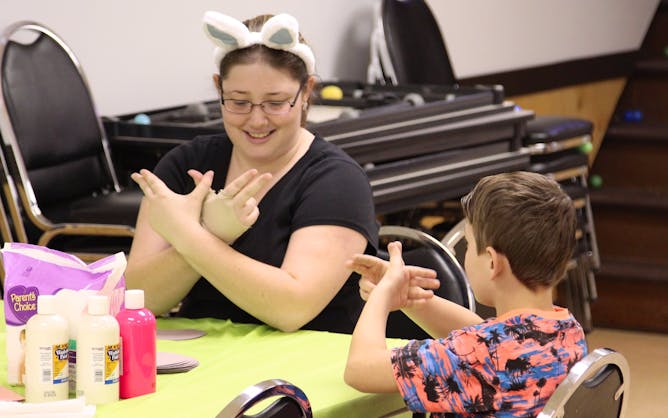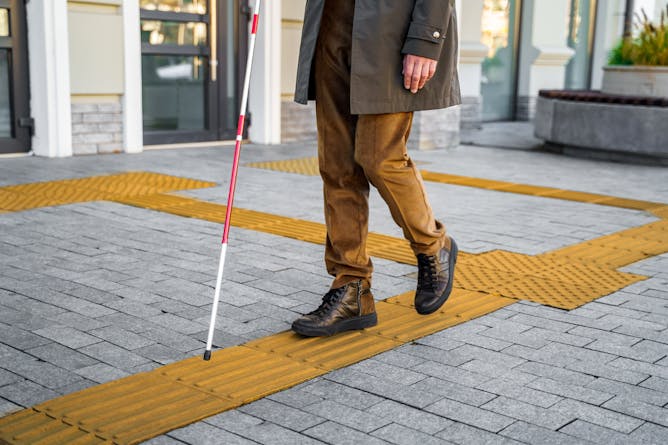|
Both legal rulings and findings of human rights commissions have played roles in shifting policies around how governments allocate educational resources. While policy changes can contribute to significant cultural and value changes, as many parents and communities know, there are often glaring gaps between what policies recognize and actual services people can count on.
Today in The Conversation Canada, Marguerite Koole of University of Saskatchewan writes about how Saskatchewan recognized ASL and Indigenous sign languages as official languages when the province’s Accessible Saskatchewan Act was implemented in December 2023.
Koole says that while it is a positive step forward, “educational institutions will require support and resources to ensure our publicly funded educational institutions can provide the appropriate services and learning technologies.”
Her story traces some history of education for deaf learners in Saskatchewan, as well as how Saskatchewan’s Advocate for Children and Youth has documented compounded systemic failings in educational services for deaf and hard of hearing Indigenous children and youth.
It also shares some current resources in the province and various apps she has relied on to learn ASL. Koole also reached out to a sign support professional with Saskatchewan Deaf and Hard of Hearing Services, Alanda McLeod, who has provided an ASL translation of the story.
Also today:
|

It remains to be seen how Saskatchewan’s new Accessibility Act will affect classroom teaching and services for deaf students in the province.
(daveynin/Flickr)
Marguerite Koole, University of Saskatchewan
Truly fostering accessible educational opportunities for deaf students can only happen with ongoing political and financial support.
|

Considering how to reduce the impact of conflicts of interest on psychedelic studies is essential to avoid public health risks.
(Shutterstock)
Elena Koning, Queen's University, Ontario; Elisa Brietzke, Queen's University, Ontario; Marco Solmi, L’Université d’Ottawa/University of Ottawa
Substantial economic growth in the psychedelic drugs market has drawn interest from corporations and start-ups. While this may accelerate research, it also sparks concerns about conflicts of interest.
|

War games that incorporate AI are set to dramatically alter how nations contemplate or prepare for war.
(Shutterstock)
John Long Burnham, University of Alberta
The rise of generative AI and its effect on war-gaming will fundamentally transform how senior military and political leaders plan and prepare for war.
|

Over the years and to this day, many health professionals have supported the theory that flat feet pose a major risk factor for musculoskeletal disorders.
(Shutterstock)
Gabriel Moisan, Université du Québec à Trois-Rivières (UQTR)
Having asymptomatic flat feet is not a problem and does not require treatment. It’s important to debunk this common myth.
|

Les surfaces texturées sur les trottoirs des villes peuvent contribuer à rendre l’espace public plus accessible aux personnes en situation de handicap.
(Shutterstock)
Ron Buliung, University of Toronto
Des décennies de mobilisation ont abouti à l’adoption de lois et d’infrastructures destinées à rendre les villes plus accessibles, mais les expériences vécues par les résidents affectés d’un handicap montrent qu’il reste encore beaucoup à faire.
|
Arts
|
-
Kadian Pow, Birmingham City University
A young white southern belle asks a woman not to cheat with her man while an older Black southern queen warns a woman against cheating with her husband.
|
|
Business + Economy
|
-
Conor O'Kane, Bournemouth University
Despite being an unashamedly Marxist critique of the economic consensus, Vulture Capitalism has been making bestseller lists.
|
|
Environment + Energy
|
-
Antaya March, University of Portsmouth; Cressida Bowyer, University of Portsmouth; Steve Fletcher, University of Portsmouth
The treaty focuses on ending plastic pollution, not eliminating the use of plastics. But some countries are more ambitious than others.
|
|